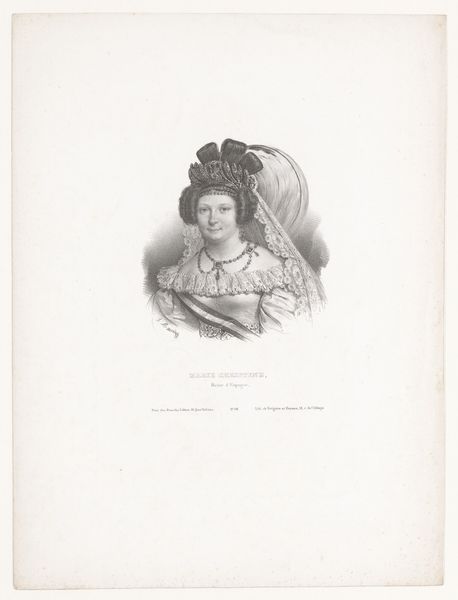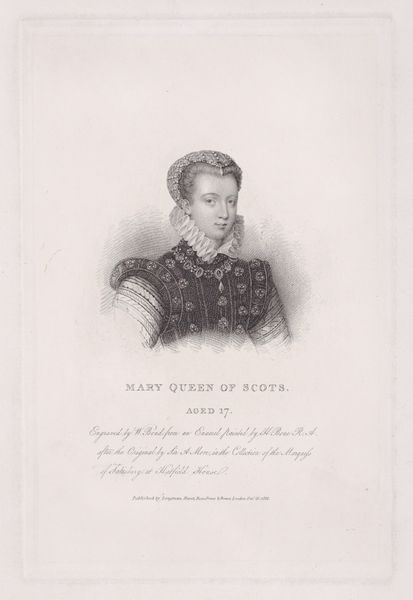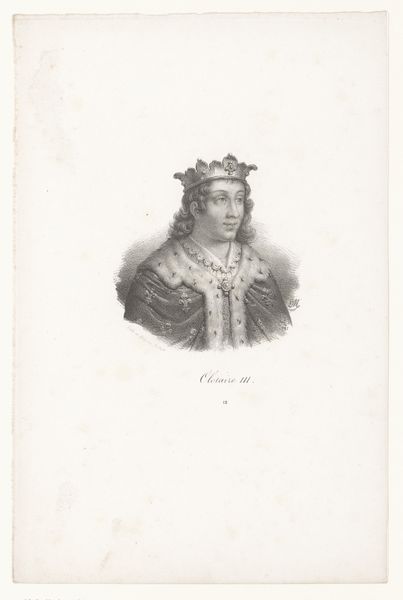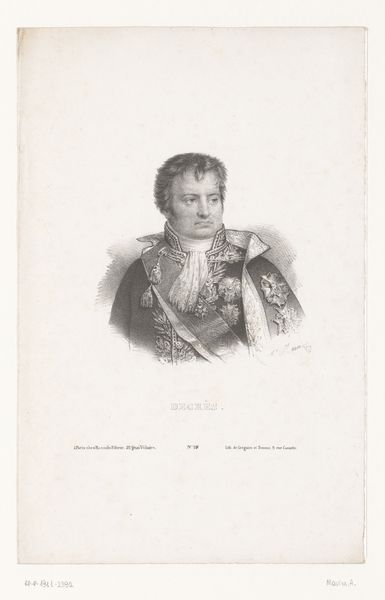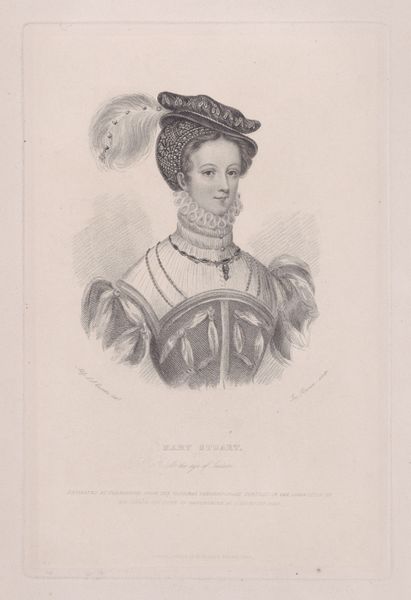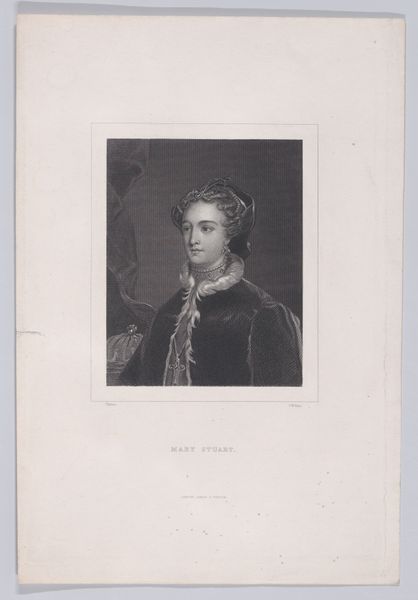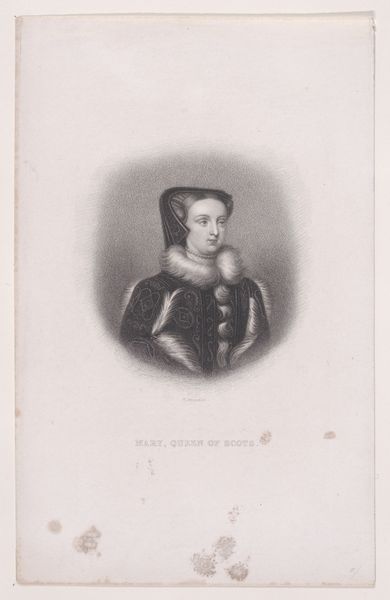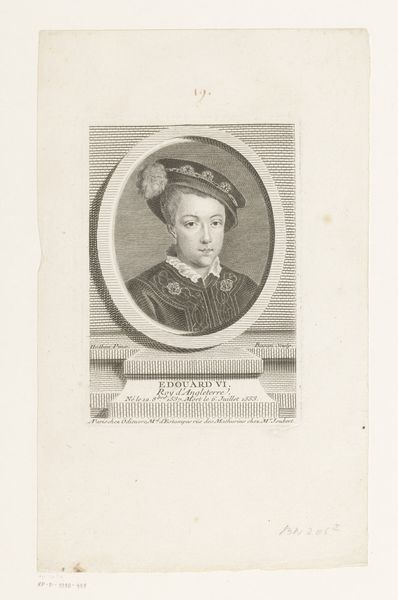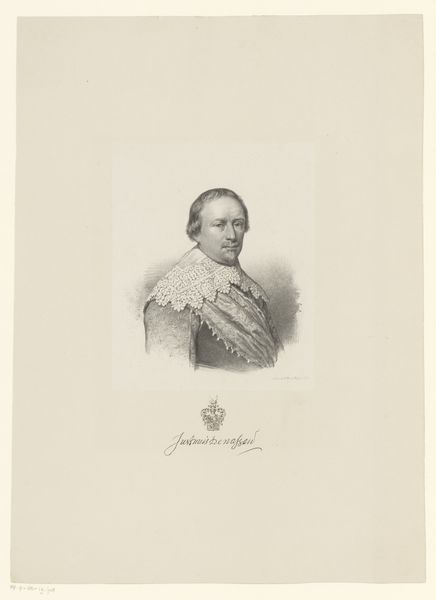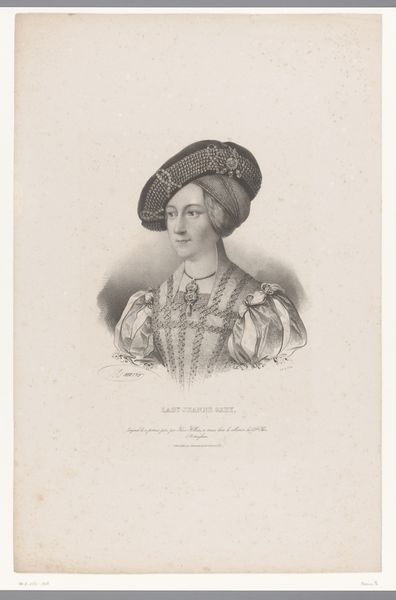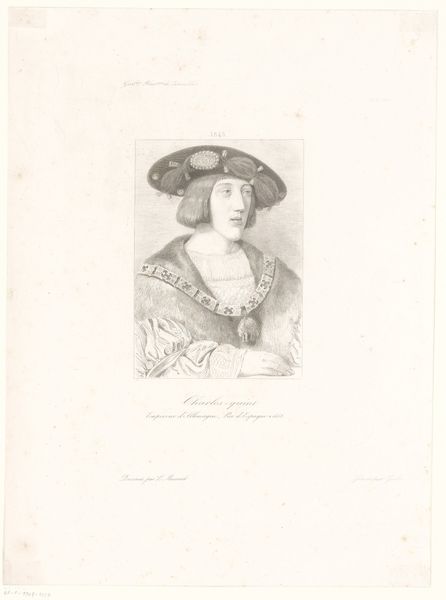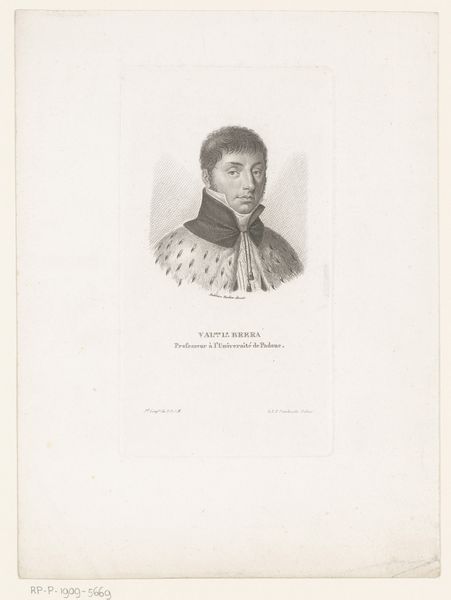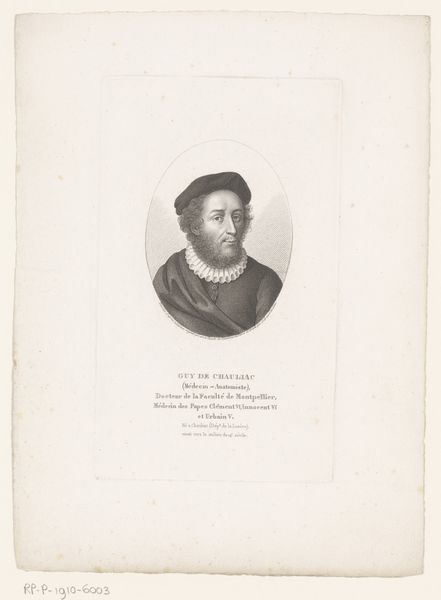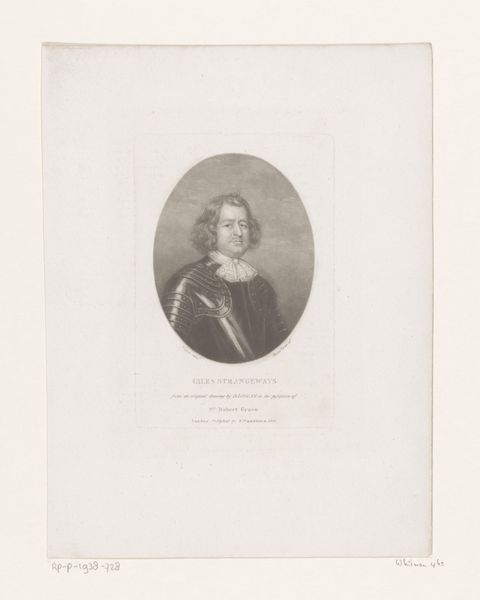
drawing, print
#
portrait
#
drawing
# print
#
romanticism
Dimensions: Plate: 8 1/8 × 5 7/8 in. (20.7 × 15 cm) Sheet: 10 13/16 × 7 9/16 in. (27.5 × 19.2 cm)
Copyright: Public Domain
Charles-Michel Geoffroy created this print of Mary, Queen of Scots, sometime in the mid-19th century. It’s an engraving, meaning the artist used a tool called a burin to incise the image into a metal plate, which was then inked and printed. The technique allows for a high degree of detail, visible here in the delicate rendering of Mary’s features and the elaborate costume. But the real story is in the process itself. Engraving was a highly skilled, labor-intensive practice, requiring years of training. In its time, this was a reproductive medium, meaning that images could be made and disseminated widely. Prints like this one helped to shape popular perceptions of historical figures like Mary, Queen of Scots, turning historical figures into commodities for mass consumption. It’s a reminder that even seemingly straightforward portraits are the product of complex social and economic forces. They also speak to the value of traditional craft skills in an age of mass production.
Comments
No comments
Be the first to comment and join the conversation on the ultimate creative platform.
